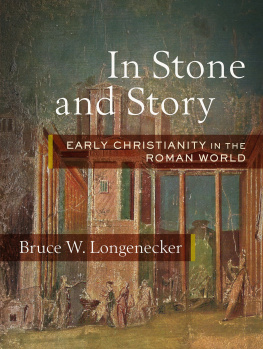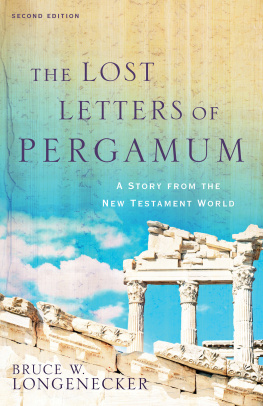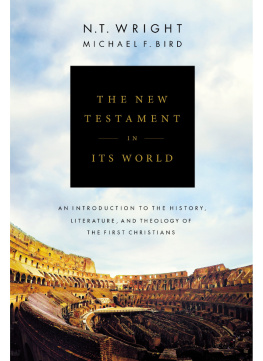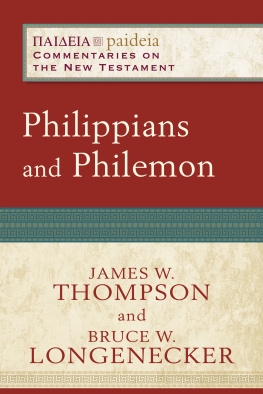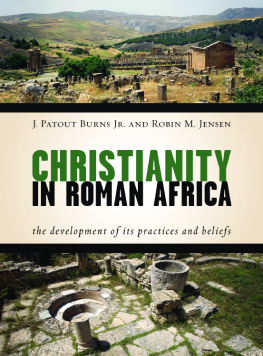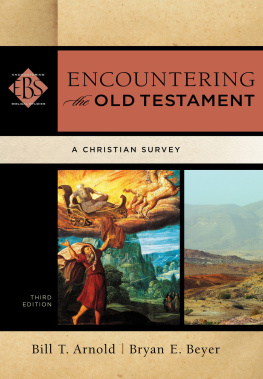Endorsements
Longeneckers work has always provided a model for the thoughtful, careful, and persuasive use of material culture as key evidence to explore issues of religious observance in the Roman world. His current book is no exception. Its masterful treatment of the material culture from Pompeii and Herculaneum and the role of that material in informing us about early Jesus-worship is once again superb. Although this lavishly illustrated book is written for an interested nonprofessional audience, I found new insights and perspectives that will shape my own research and teaching.
Steven L. Tuck , Miami University; author of Pompeii: Daily Life in an Ancient Roman City
Longenecker has made an outstanding contribution to understanding the development of early Christianity in the Roman world, taking seriously both stone and story. True to its goal, select texts are examined alongside detailed archaeological evidence from Pompeii and Herculaneum. The book is beautifully enriched with images of frescoes, monuments, inscriptions, and newsy graffiti. Appreciation for student perspectives and questions guides the style and organization of the volume. Interpretive challenges are addressed with great lucidity on topics ranging from ancient deities to spiritual identities to literacy and concepts of housing and space. Longeneckers study is deeply informed by his knowledge of early Christianity and his breadth of understanding of contemporary scholarship. The thematic approach offers innovative opportunities for teaching and learning, with the emergence of new associations and interfaces that can shed light on the rise of early Jesus-devotion. I know of no other book like it, and I am eager to discuss its rich contents with students.
Margaret Y. MacDonald , Saint Marys University
The circumstances of Pompeiis destruction in 79 CE meant that Pompeii and the adjacent towns of Herculaneum and Oplontis were frozen in time, and houses, shops, temples, and industrial complexes were preserved along with their contents and decorations. Pompeii thus provides better and more detailed evidence of ancient urban life than any other site from the ancient world. Longenecker expertly employs the findings from Pompeii not only to produce an engaging picture of the social, religious, economic, and political life of this town but also to show how a detailed understanding of ancient urban life casts light on the activities and beliefs of early Jesus-followers, who in some respects fit comfortably into ancient society and in other respects offered different perspectives on social relationships, piety, politics, and commerce. In Stone and Story normalizes the picture of early Christians by giving due scope to the many ways they were aligned with ancient society, which allows their distinctives to stand out with particular clarity. An excellent teaching resource.
John S. Kloppenborg , University of Toronto
Half Title Page
Title Page
Copyright Page
2020 by Bruce W. Longenecker
Published by Baker Academic
a division of Baker Publishing Group
PO Box 6287, Grand Rapids, MI 49516-6287
www.bakeracademic.com
Ebook edition created 2020
All rights reserved. No part of this publication may be reproduced, stored in a retrieval system, or transmitted in any form or by any meansfor example, electronic, photocopy, recordingwithout the prior written permission of the publisher. The only exception is brief quotations in printed reviews.
Library of Congress Cataloging-in-Publication Data is on file at the Library of Congress, Washington, DC.
ISBN 978-1-4934-2234-0
Unless otherwise noted, Scripture quotations are from the New Revised Standard Version of the Bible, copyright 1989 National Council of the Churches of Christ in the United States of America. Used by permission. All rights reserved. The author has occasionally altered the wording to highlight a specific point.
Scripture quotations labeled NIV are from the Holy Bible, New International Version. NIV. Copyright 1973, 1978, 1984, 2011 by Biblica, Inc. Used by permission of Zondervan. All rights reserved worldwide. www.zondervan.com. The NIV and New International Version are trademarks registered in the United States Patent and Trademark Office by Biblica, Inc.
Scripture quotations labeled RSV are from the Revised Standard Version of the Bible, copyright 1946, 1952 [2nd edition, 1971] National Council of the Churches of Christ in the United States of America. Used by permission. All rights reserved worldwide.
Cover photo: A fresco of Medea and the daughters of King Pelias (from the triclinium of the House of the Group of Glass Vases in Pompeii, MANN 111477)
Visit www.bakeracademic.com/professors to access study aids and instructor materials for this textbook.
Dedication
For Richard Bauckham and Philip Esler
Contents
Cover
Endorsements
Half Title Page
Title Page
Copyright Page
Dedication
Looking Ahead: An Introduction
Part 1: Protocols of Engagement
1. Human Meaning in Stone and Story
2. Fire in the Bones
3. Accessing the First-Century World
Timeline of Events
Part 2: Protocols of Popular Devotion
4. Deities and Temples
5. Sacrifice and Sin
6. Peace and Security
7. Genius and Emperor
8. Mysteries and Knowledge
9. Death and Life
Part 3: Protocols of Social Prominence
10. Prominence and Character
11. Money and Influence
12. Literacies and Status
13. Combat and Courts
14. Business and Success
15. Household and Slaves
16. Family and Solidarity
17. Piety and Pragmatism
18. Powers and Protection
19. Banqueting and the Dead
Looking Further: A Conclusion
Appendix: Questions to Consider
Abbreviations
Glossary
Further Reading
Credits
Scripture and Ancient Writings Index
Back Ad
Back Cover
Looking Ahead
An Introduction
A little painting on the wall of a small house in Pompeii is one of the most delightful artifacts among the many treasures buried by the volcanic eruption of Mount Vesuvius in the late first century. The painting (shown below) depicts two little cupids pulling rings and a mirror out of a jewelry box and examining them with curiosity.
That charming vignette can serve as an analogy of what transpires in this book. Like those two cupids, the chapters of this book pull out selected archaeological resources from the treasure chest of Vesuvian artifacts, examining them for what they reveal about the ancient Roman world. Moreover, when configured in relation to selected texts of early Christianity, those artifacts (graffiti, inscriptions, statues, temples, paintings, tombs, and more) help to foster fresh angles of vision regarding the slow but steady rise of early Jesus-devotion within its earliest historical contexts. Relating texts of the early Jesus-movement to selected Vesuvian resources offers the opportunity to explore ways in which Jesus-devotion was getting a foothold within that world and, at times, infusing fresh resources into it.

Figure Intro.1. Two cupids inspecting jewelry and a mirror (from the House of the Prince of Naples in Pompeii, located at 6.15.8; for an explanation of this numbering system [Fiorellis], see chapter 3 under the heading Designations Frequently Used)
In the process, readers of this book may learn as much about Pompeii as they do about the early followers of Jesus and the theological library they bequeathed to the world (that is, the New Testament). That will be no bad thing, since understanding how an ancient urban center worked will inevitably help to highlight the issues of Christianitys emergence within similar urban centers throughout the Mediterranean world of the first century.

